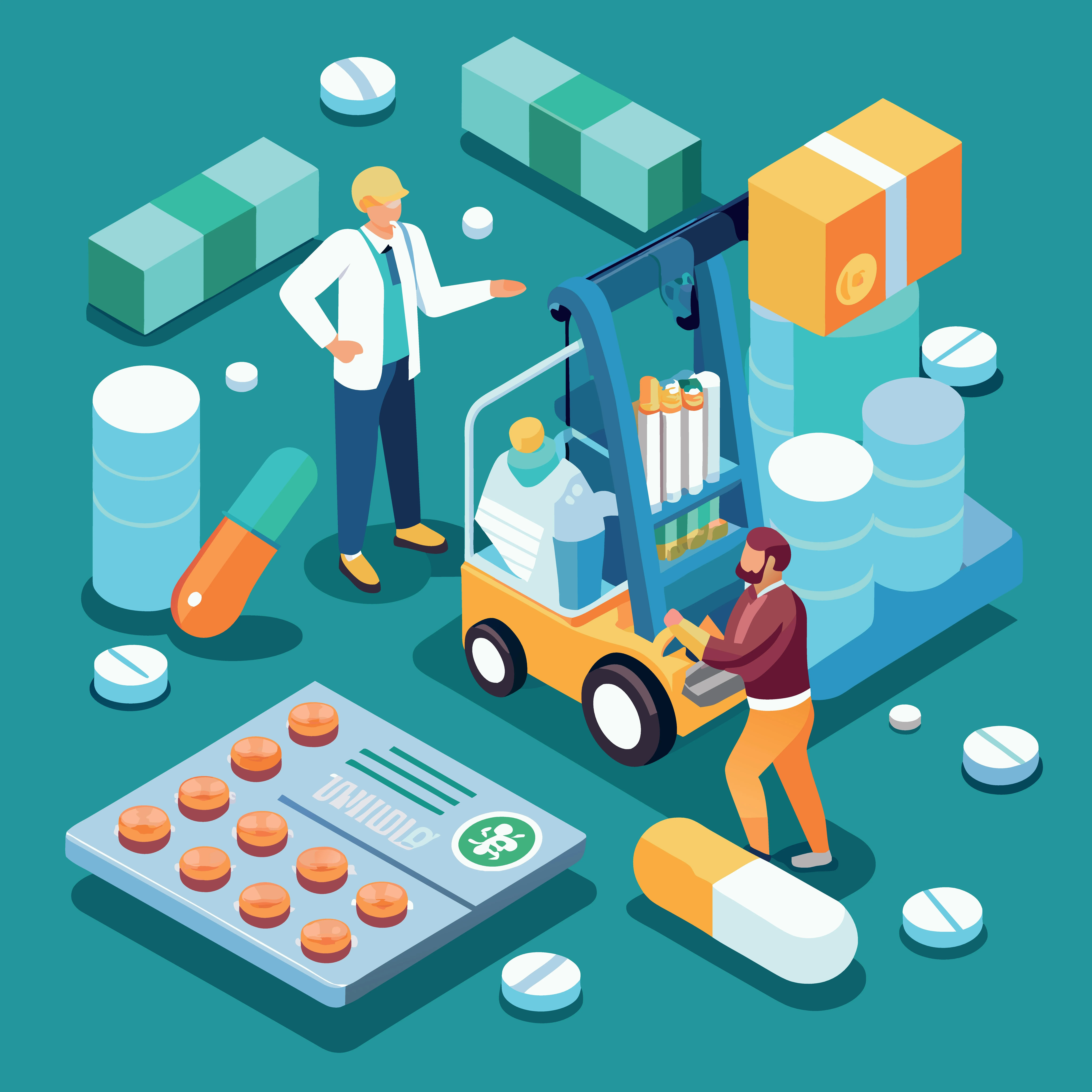From ordinary antibiotics to life-saving cancer medicines, drug shortages are becoming a major global concern. These shortages may result in less-than-ideal therapy options, postpone treatment, or even endanger lives. Numerous disruptions are caused by a delicate and frequently excessively intricate pharmaceutical supply chain. We fortify it with more intelligent supply chain planning that integrates digital innovation, data-driven decision-making, strategic sourcing, and proactive forecasting. The main elements of medication shortages will be covered in this article, along with how contemporary supply chain tactics can halt or perhaps avoid them. World BI is organizing Pharma Supply Chain and Logistics Innovation Programme again this year where this topic is going to be discussed.
Understanding the Root Causes of Drug Shortages
Initially we need to understand why shortages happen. Common causes are as below:
- Single-source suppliers: Many drugs rely on a single manufacturing site or Active Pharmaceutical Ingredient (API) supplier, making the supply chain highly susceptible.
- Manufacturing issues: Quality control failures, Contamination and equipment breakdowns can halt production.
- Regulatory delays: Slow approval or inspection processes can create supply obstructions.
- Sudden demand spikes: Geopolitical events, Pandemics, or natural disasters can lead to inconsistent surges in demand.
- Logistical disruptions: Transport delays, port congestion, or cold chain breakdowns can all interrupt supply flow.
Causes of Shortages:
There are many causes of prescription drug shortages we can see all over the word. Sometimes demand outpaces supply because of an unexpected surge in demand for a new medicine. In other cases, quality issues lead to supply disruptions. Perhaps there is a problem with a drug or the facility it is made in. Most frustrating of all are the commonly prescribed drugs that are in short supply because the profit margins on them are so low, there is no incentive to produce them.

Smarter Supply Chain Planning
Smarter supply chain planning refers to the use of advanced technologies, collaborative strategies, and predictive tools to anticipate, prevent, and respond to disruptions in drug production and delivery. It's a shift from reactive to proactive supply chain management.
Components of a Smarter Approach:
Demand Forecasting with Predictive Analytics
Conventional planning often relies on historical sales data, but this is no longer enough. By integrating predictive analytics and AI-driven demand sensing, pharma companies can:
- Detect early signals of demand shifts
- Adjust production plans in real time
- Reduce inventory imbalances
Diversified and Localized Sourcing
Overreliance on a few suppliers often in geographically distant locations—makes the supply chain fragile. Smarter planning involves:
- Multi-sourcing critical APIs and raw materials from different regions.
- Building strategic inventories or safety stock closer to demand centers.
- Encouraging onshore or nearshore manufacturing to reduce geopolitical risk.
The European Union has already started advocating for local production of essential medicines to reduce dependency on imports from Asia.
Integrated Supply Chain Platforms
Visibility is a major challenge in pharma logistics, especially when dealing with multiple stakeholders, countries, and compliance frameworks A significant obstacle in pharmaceutical logistics is visibility, particularly when working with several stakeholders, nations, and regulatory frameworks.
Companies can:
- Gain real-time visibility into inventory, production, and distribution status.
- Simulate “what-if” disruption scenarios.
- Enable faster response during shortages.
Integration between procurement, production, quality, and distribution systems reduces delays caused by siloed information.
Collaborative Planning with Suppliers and Distributors
The pharmaceutical supply chain is not a solo operation. It includes raw material suppliers, manufacturers, logistics partners, wholesalers, and pharmacies. Smarter planning promotes CPFR which is collaborative planning, forecasting, and replenishment to ensure alignment between all parties.
- Share rolling forecasts and production schedules with suppliers.
- Co-develop contingency plans for critical products.
- Ensure aligned inventory goals across distributors and retailers.
Regulatory and Government Collaboration
Smarter supply chain planning includes early engagement with regulators to:
- Expedite approvals for alternative suppliers or manufacturing sites.
- Share real-time inventory and shortage data with national agencies.
- Develop pre-approved emergency protocols for critical drugs.
Programs like:
- U.S. FDA’s Drug Shortage Staff
- EMA’s Medicines Shortages Single Point of Contact (SPOC)
This network (SPOC) aim to improve early warning systems and communication during supply crises.
Cold Chain Innovation for Sensitive Drugs
Many biologics, vaccines, and specialty drugs are highly temperature-sensitive. Smart cold chain innovations include:
- Real-time temperature tracking with IoT sensors.
- Route optimization based on weather and customs data.
- Reusable packaging to ensure product integrity and reduce cost.
A temperature excursion can render a shipment useless, making cold chain resilience critical to avoiding preventable shortages.
Sustainability and Resilience
As sustainability becomes a consumer priority and regulatory, pharma companies must align eco-friendly goals with supply chain resilience.
- Use of green packaging and carbon-neutral transport.
- Reducing waste by improving expiration tracking and shelf-life management.
- Circular logistics models for returns and recalls.

Example: Tackling Shortages with Digital Control Towers
A well-known international pharmaceutical company installed a machine learning and artificial intelligence AI powered digital control tower. By integrating live data from suppliers, transporters, and production units, they reduced response time to disruptions by 80% and cut down on critical drug shortages across several therapeutic categories.
Conclusion:
Drug shortages are no longer scarce, isolated incidents they are recurring challenges that threaten patient health, disrupt care, and strain healthcare systems. As pharmaceutical products become more complex and global crises more frequent, traditional supply chain models fall short in ensuring consistent availability. Through the integration of digital platforms, diversified sourcing, real-time data, and predictive analytics, pharmaceutical companies may move from responding to disruptions to proactively preventing them. Further enhancing resilience is the development of solid connections with suppliers, logistical partners, and regulators.
World BI Pharma Supply Chain and Logistics Innovation Programme
It is a global event uniting pharmaceutical industry leaders, supply chain innovators, and logistics experts to explore advancements in Pharma Supply Chain. Pharma Supply Chain and Logistics Innovation Programme Organized by World BI, this conference focuses on pioneering strategies for optimizing pharmaceutical supply chains, workforce, enhancing logistics efficiencies, Impact of US Tariffs, 3PL and addressing the unique challenges of this critical sector. This platform fosters collaboration and knowledge-sharing to build robust, drug shortages, efficient and secure supply chains that ensure timely delivery of medicines, patient safety, and operational excellence.